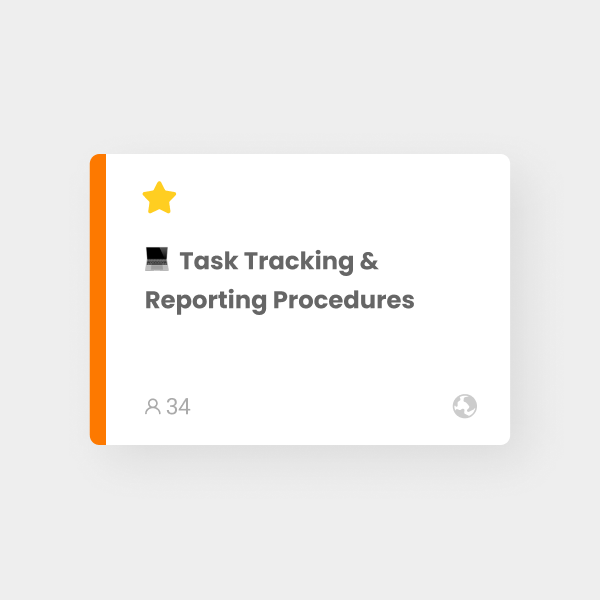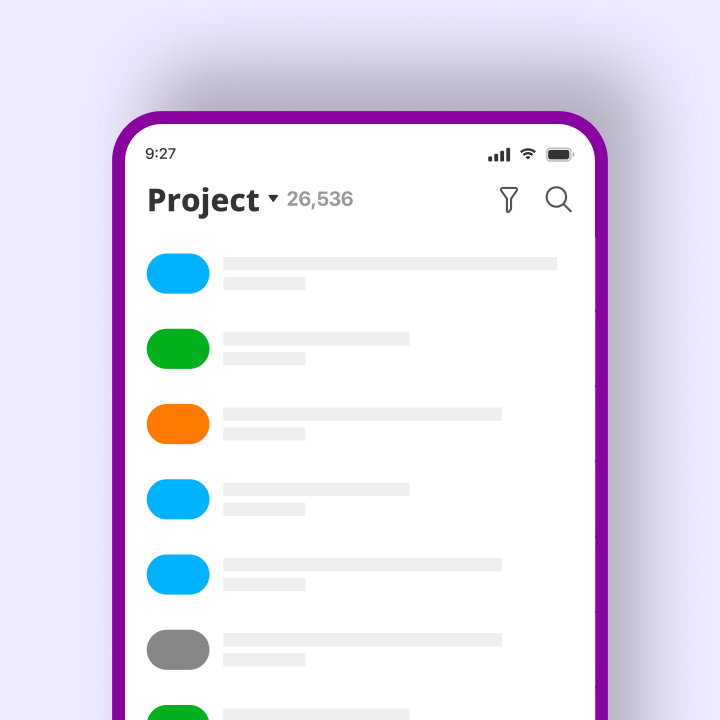Have you ever wondered how complex projects, like building skyscrapers or launching software, are accomplished? Behind every successful project is a structured approach known as project management. This guide is designed for beginners, simplifying the jargon and processes involved. At its core, project management is about organizing complexity to achieve specific goals. This comprehensive guide will cover key concepts, essential phases, common methodologies, critical skills, and practical guidelines to help you navigate the project management journey effectively.
What Is Project Management?
Before diving into the specifics, let’s establish a foundational understanding. Project management isn’t just about creating to-do lists; it’s a strategic discipline.
Definition of Project Management
Project Management is the application of specific knowledge, skills, tools, and techniques to project activities to meet the project requirements. According to the Project Management Institute (PMI), the leading global authority, it involves leading the work of a team to achieve goals and meet success criteria within a defined timeframe and budget. In simpler terms, it’s the process of planning, executing, and overseeing the work required to achieve a specific goal, ensuring resources are used effectively and the desired outcome is delivered successfully. It’s about answering the key questions: What needs to be done? Why are we doing it? Who will do it? When will it be done? How will it be done? And what resources are needed?
Why Is Project Management Important?
In today’s fast-paced world, effective project management is more critical than ever. It provides structure and direction, ensuring that efforts are focused and aligned with strategic objectives. Without it, projects often suffer from unclear goals, scope creep (uncontrolled changes), missed deadlines, budget overruns, poor communication, wasted resources, and ultimately, failure to deliver the intended value.
Implementing project management principles brings numerous benefits. It ensures clear focus and objectives, so everyone understands the goal and their role. It enables realistic planning for timelines, budgets, and resources. A key advantage is controlled scope, managing changes effectively to prevent projects from spiraling. Proper project management facilitates proactive risk management, identifying potential problems early. It provides an organized process, offering a roadmap and structure for execution, and fosters improved communication among team members and stakeholders. Furthermore, it ensures efficient resource use and significantly increases the likelihood of higher success rates – delivering projects on time, within budget, and to the required quality. Finally, formal closing processes encourage learning and improvement by capturing lessons learned for future endeavors.
Essentially, project management transforms ambitious goals into achievable realities by providing the framework for organized, efficient, and controlled execution.
Key Features of Projects
To understand project management, one must first understand what constitutes a “project.” Not every task or ongoing operation qualifies. Projects have distinct characteristics that differentiate them from routine business activities.
Unique Objectives
Every project is undertaken to achieve a specific, unique goal or objective. This might be creating a new product (like a smartphone app), implementing a new service (like a customer support portal), building something tangible (like a bridge), improving an existing process (like streamlining order fulfillment), or organizing a one-time event (like a conference). The outcome is distinct and hasn’t been produced in exactly the same way before. This uniqueness means projects inherently involve uncertainty and require tailored planning, unlike repetitive operational tasks where processes are well-established. The objective must be clearly defined so that success can be measured upon completion.
Temporary Nature
A defining feature of any project is that it is temporary. It has a definite beginning and a definite end. The end is reached when the project’s objectives have been achieved, or when the project is terminated because its objectives will not or cannot be met, or when the need for the project no longer exists. This temporary nature doesn’t necessarily mean the project duration is short – some projects can last for years – but it does mean there is a finite lifespan. This contrasts sharply with ongoing operations or business-as-usual activities, which are repetitive and designed to sustain the business over time. The temporary nature necessitates clear planning for initiation, execution, and crucially, closure.
The 5 Key Phases of Project Management
Project management typically follows a structured lifecycle, commonly broken down into five distinct phases. While the specific terminology might vary slightly, these phases represent the logical flow from project conception to completion. Understanding these phases provides a roadmap for managing any project effectively.
1. Initiating
This crucial first phase formally defines and authorizes the project. The primary goal is understanding the project’s purpose, feasibility, and high-level objectives, ultimately securing approval to proceed. Key activities involve defining the business need or problem that the project addresses and identifying the high-level objectives (making them SMART where possible). Feasibility studies are often conducted to assess technical, economic, and operational viability. It’s also essential to identify key stakeholders – anyone affected by or interested in the project. A central document created here is the Project Charter, which formally authorizes the project and outlines its purpose, objectives, scope, stakeholders, Project Manager, and initial assumptions. The phase concludes upon securing formal approval to move into detailed planning, typically via the signed Project Charter.
2. Planning
Arguably the most critical phase, planning involves creating the detailed roadmap for achieving project objectives. This phase answers the “How, Who, When, and How Much?” questions. Thorough planning here is vital for success. Activities include meticulously defining the scope by detailing what’s included and excluded, often using a Work Breakdown Structure (WBS) to break down deliverables into tasks. Developing the schedule involves identifying tasks, estimating durations, determining dependencies, and creating a realistic timeline (often using Gantt charts). Creating the budget requires estimating costs for tasks and resources. Resource planning identifies necessary personnel, equipment, and materials and plans their allocation. Proactive risk management planning involves identifying potential risks and developing mitigation strategies. A communication plan defines how information will flow, while quality planning sets standards, and procurement planning addresses the need for external resources. The main output is the comprehensive Project Management Plan, the baseline for execution.
3. Executing
This is the “doing” phase where the plan is put into action, and the team creates the project deliverables. The Project Manager coordinates resources, manages the team, and ensures work aligns with the plan. Core activities involve directing the project work according to the plan and managing team development by fostering cohesion and providing support. Communicating according to the plan through meetings and information distribution is vital, as is managing stakeholder engagement by keeping them informed and managing expectations. If external resources are needed, conducting procurements and managing vendor relationships occurs here. Should risks materialize, implementing risk responses according to the plan is also part of execution. This phase typically consumes the most time and resources.
4. Monitoring and Controlling
Running concurrently with execution, this phase focuses on tracking progress, comparing it against the plan, and taking corrective action when necessary. The aim is to keep the project aligned with its scope, schedule, and budget baselines. Key activities involve tracking progress by monitoring task completion and milestones, often using project management software and status reports. Measuring performance compares actual progress and spending against planned baselines. A crucial element is managing changes through a formal control process to evaluate and approve or reject requested modifications. Continuous monitoring of risks, both existing and new, is essential, alongside quality control to ensure deliverables meet standards. Finally, reporting performance communicates status, issues, and forecasts to stakeholders. This oversight ensures deviations are caught early.
5. Closing
The final phase provides formal closure to the project. It involves finalizing all activities, ensuring deliverables are accepted, and formally disbanding the team. Key steps include obtaining final acceptance of deliverables from the client or sponsor. Any outstanding contracts or procurements must be closed. All project documents need to be organized and stored in the project archive for future reference. A critical activity is conducting lessons learned sessions to capture insights for future projects. It’s also important to celebrate success and recognize the team’s efforts. Lastly, releasing resources, including team members, signifies the project’s formal end. Proper closure ensures all loose ends are tied up and organizational knowledge is preserved.
Common Project Management Methodologies
While the five phases provide a general lifecycle, various methodologies offer specific frameworks and approaches for managing the work within those phases. The best methodology often depends on the project’s nature, complexity, and requirements.
Agile
Agile represents an iterative and incremental philosophy focused on flexibility, collaboration, customer feedback, and rapid delivery. Rather than extensive upfront planning, Agile breaks work into small, manageable cycles (sprints). Teams collaborate closely, adapt readily to changing requirements, and frequently deliver working product increments. This approach thrives in environments with high uncertainty or evolving requirements, making it popular for software development. Its core values emphasize individuals and interactions, working software, customer collaboration, and responding to change.
Waterfall
The Waterfall model offers a traditional, linear, and sequential path. Project phases—such as requirements gathering, design, implementation, testing, and deployment—are completed in strict order, with each phase finishing before the next begins. Planning is comprehensive and performed upfront, with changes generally discouraged later in the process. This methodology suits projects with stable, well-understood requirements and clear deliverables where significant changes are unlikely, common in fields like construction or traditional manufacturing. Its rigidity, however, can be a disadvantage if requirements need to adapt mid-stream.
Scrum
Scrum is a popular framework operating within the broader Agile philosophy. It structures work into fixed-length iterations known as “Sprints,” typically lasting two to four weeks. It defines specific roles: the Product Owner (responsible for defining and prioritizing requirements), the Scrum Master (a facilitator who removes impediments and guides the team on Scrum practices), and the Development Team (who executes the work). Scrum employs distinct ceremonies like Daily Scrums (brief daily check-ins), Sprint Planning (selecting work for the upcoming sprint), Sprint Reviews (demonstrating completed work), and Sprint Retrospectives (reflecting on the process for improvement). This structured yet flexible approach is widely used for complex product development.
Lean
Originating from the Toyota Production System in manufacturing, Lean project management prioritizes maximizing customer value while systematically minimizing waste. Waste, in this context, refers to any activity that doesn’t add value, such as unnecessary delays, defects, over-processing, or unused features. Key Lean principles include clearly defining value from the customer’s viewpoint, mapping the entire value stream to identify waste, creating a smooth workflow (flow), implementing pull systems where work is initiated only based on demand, and relentlessly pursuing perfection through continuous improvement (often termed Kaizen). The goal is peak efficiency and effectiveness by eliminating non-value-adding steps.
Kanban
Kanban, often used in conjunction with Agile and Lean, is a method focused on visualizing workflow, managing flow efficiency, and limiting work in progress (WIP). Teams utilize a Kanban board (which can be physical or digital) divided into columns representing stages of the workflow (e.g., Backlog, To Do, In Progress, Testing, Done). Tasks, visualized as cards, move across these columns as they advance. A core principle is setting WIP limits for columns like “In Progress,” which restricts the number of tasks that can be active simultaneously. This helps prevent bottlenecks, improves team focus, exposes process issues, and encourages a smooth, continuous flow of work rather than relying on fixed iterations like Scrum.
Choosing the right methodology requires understanding the project’s characteristics (clarity of requirements, likelihood of change, complexity) and the organizational context. Sometimes, hybrid approaches combining elements of different methodologies are used.
Essential Skills Every Project Manager Needs
Effective project management requires more than just understanding processes and methodologies. Successful Project Managers (PMs) possess a blend of technical, interpersonal, and leadership skills.
Communication
Arguably the most critical skill, communication encompasses the PM’s ability to clearly articulate goals, delegate effectively, provide constructive feedback, report progress accurately, manage stakeholder expectations, and adeptly resolve conflicts. This requires proficiency in written forms (plans, reports, emails), verbal interactions (meetings, presentations), and, crucially, active listening. Adapting communication style for diverse audiences—from technical team members to senior executives and clients—is essential, as poor communication remains a primary contributor to project failure.
Time Management
Given that projects operate under deadlines, strong time management is non-negotiable. PMs must excel at creating realistic schedules, effectively prioritizing tasks, managing their own time efficiently, and guiding the team to meet milestones. This involves accurately estimating task durations, identifying critical dependencies, managing the project’s critical path, and proactively addressing potential delays using techniques like time blocking and prioritization matrices, often supported by scheduling software.
Risk Management
Projects are inherently uncertain ventures. A skilled PM must proactively identify potential risks—both threats and opportunities—assess their probability and potential impact, and develop robust strategies for mitigation or exploitation. This demands analytical thinking, foresight, and thorough contingency planning. Neglecting risk management often leads to significant setbacks during project execution.
Leadership
Project Managers must effectively guide, motivate, and inspire their teams, frequently without the benefit of direct hierarchical authority. This involves establishing a clear project vision, cultivating a collaborative and supportive team environment, empowering team members to take ownership, making timely and decisive choices, skillfully resolving conflicts, and consistently leading by example. Strong leadership fosters trust and encourages peak performance, particularly when navigating challenging project phases.
Beyond these core four, successful PMs also demonstrate strong organizational abilities, sharp problem-solving skills, critical thinking, adaptability to change, effective negotiation tactics, sound budget management, and often possess technical or domain-specific knowledge pertinent to their projects.
Building a Successful Project Team
A project’s success is heavily dependent on the team executing the work. A Project Manager plays a key role in assembling, developing, and leading this team.
Key Roles in a Project Team
While the specific composition varies, most project teams include several key roles. The Project Manager leads the effort and holds overall responsibility. The Project Sponsor, typically a senior figure, champions the project, secures resources, and helps navigate organizational hurdles. Team Members are the individuals possessing the necessary skills (technical, creative, analytical) to perform the actual project tasks. Subject Matter Experts (SMEs) contribute specialized knowledge crucial for specific project aspects. Finally, Stakeholders encompass anyone with an interest in or who is affected by the project, including end-users, department heads, clients, and suppliers, whose input and buy-in are often vital. Clearly defining these roles and their responsibilities early on prevents confusion and ensures accountability. Tools like RACI charts are often used for this purpose.
How to Foster Collaboration
Collaboration is the engine of complex projects. Project Managers can actively cultivate a collaborative environment through several practices. Establishing clear communication channels and expectations is fundamental. Promoting openness and trust creates a safe space for sharing ideas and concerns. Ensuring everyone understands the defined shared goals keeps the team aligned. Utilizing collaborative tools, such as project management software like Morningmate, Asana, or Trello, facilitates shared access to information and progress updates. Actively facilitating team building strengthens rapport. Recognizing contributions, both individual and collective, boosts morale. Finally, resolving conflicts constructively maintains a positive working atmosphere. A highly collaborative team is inherently more engaged, productive, and adept at overcoming challenges.
Tips for Successful Project Management
While every project presents unique challenges, certain principles consistently pave the way for success. Beginners and experienced managers alike benefit from adhering to these guidelines.
Set Clear Goals
Begin every project with clearly defined, SMART (Specific, Measurable, Achievable, Relevant, Time-bound) objectives. Ambiguity in goals leads to confusion, wasted effort, and difficulty in determining success. Ensure these goals are communicated effectively and understood by all team members and stakeholders. Regularly revisit them to confirm their continued relevance throughout the project lifecycle.
Communicate Early and Often
Proactive and consistent communication is non-negotiable. Develop a communication plan during the planning phase, outlining who needs what information, when, and how it will be delivered. Provide regular, transparent status updates, flag potential issues or risks as soon as they arise, and foster an environment of open dialogue. Encourage feedback and practice active listening. In project management, it’s almost always better to over-communicate than to leave stakeholders guessing.
Choose the Right Tools
In the digital age, leveraging technology is key to efficiency. Select project management software that aligns with your team’s workflow and the project’s complexity. Look for tools offering robust task management, scheduling capabilities (like Gantt charts or timelines), features for collaboration (such as file sharing and commenting), integrated communication options (like the chat or feeds found in Morningmate), and clear reporting functionalities. The right software can automate routine tasks, provide crucial visibility into progress, and significantly enhance team coordination. Crucially, ensure the team receives adequate training to use the chosen tools effectively.
Manage Risks Proactively
Adopt a forward-looking approach to risk. Instead of waiting for problems to occur, dedicate specific time during planning to brainstorm potential risks with your team. Analyze each identified risk for its likelihood and potential impact, then develop clear mitigation strategies or contingency plans for the most critical ones. Maintain a living risk register, reviewing and updating it regularly as the project progresses. Foster a culture where team members feel comfortable raising potential risks early. This proactive stance can prevent minor issues from escalating into major crises, saving valuable time and resources.
Beyond these core tips, securing strong support from the project sponsor, managing stakeholder expectations realistically, breaking down large tasks into manageable components, diligently tracking progress against established baselines, celebrating milestones to maintain morale, and conducting thorough lessons learned reviews after project completion are all vital practices for consistent project success.
Conclusion
Project management is crucial for organizations aiming to achieve goals efficiently. This beginner’s guide covers key concepts such as defining projects, the five phases from initiation to closing, methodologies like Agile and Waterfall, essential Project Manager skills, and the importance of teamwork. By following core guidelines—setting clear goals, effective communication, proactive risk management, and using appropriate tools—teams can improve project success and build a strong foundation for future endeavors.




